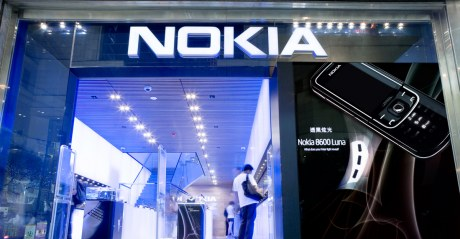
What makes Nokia interesting when it comes to sustainability is that this company has highly efficient manufacturing processes, and has supported its suppliers in this field in long-term agreements. Its supply chain is interlinked with all aspects of the company and its consumers, and it is this management of the supply chain which is considered to be a major key to the success of the company as a whole.
Nokia employs the Smart manufacturing technique which together with its unique combination of in-house manufacturing and outsourcing has enormous impact on its competitiveness worldwide. EMG spoke with Markus Terho, Head of Sustainability for Nokia, about the things the company has learnt along the journey and what new milestones are appearing on the horizon as it continues.
To start with, we were the first company in the electronics industry to change our view on how we manage materials that go into our products.
Typically what consumer electronics companies do is form a list of materials that are not permitted to be used in their products, which they then send to their suppliers with instructions to comply. This is actually a very old-fashioned way of doing things, which we did until the mid-nineties when we had a clear change of viewpoint and direction. As of the mid-nineties we have wanted to know about every substance involved in the components, parts, sub-assemblies, or even the very materials that we use. A simple piece of plastic has several different materials in it, so our aim is to know exactly what is in our products, right down to that level.
When we first undertook this initiative, many said it would be impossible to ascertain all this. They thought no-one would give us the information, or that it would be impossible to manage, or that it would be very costly and our business would suffer. This has never happened! However, it took us a long time – more than six years in fact – to build this capability. It has helped us significantly.
Many external requirements have been initiated by regulators in Europe, the USA, China and other parts of the world, such as new materials being added to a restricted list, or totally banned from use in certain applications or products.
Now, when the discussion on the policy front starts and scientists start to look at new evidence and debate whether a certain substance should be regulated or not, we can immediately go into our component database and see where we use this substance, and evaluate whether it can be replaced by something else. We also look at how much effort will be required to tweak it in the future. We have now developed this capability to provide a full material declaration – a 100% breakdown – of what materials are in a component or a part that one company might supply to another. With this information, we have created a standardized system incorporated into our supply chain, which lets us intelligently manage substances of concern in our products and ensure that the highest global standards are met. It’s been good to see some other electronics manufacturing companies following our lead on this.
We are also very active with regard to cooperation within the electronics industry supply chain.
We make sure we manage risk factor areas, such as working conditions, workplace safety, environmental impact and ambitions of the company, and how information about these areas is exchanged within the supply chain. We look at how Nokia, with its many suppliers, can categorize and assess risk with certain types of manufacturing processes, materials and locations, for example.
Nokia has also been an active participant in the Global e-Sustainability Initiative (GeSI), which is an industry-wide effort to help the biggest players in the industry work for example with the same information about products and materials. We’ve been able to simplify that process quite radically, so that instead of every company having to seek out information for itself, it is all commonly available among companies using the same system and approach.
With things like this, where we have taken an approach of developing something based on our needs, we always try to look at how we might be able to help the wider industry in areas we feel are important. Leading sustainability is not about pushing certain ideas onto others, but rather looking at how we can work with others to make a better impact on the industry as a whole, and create a better end result.
From EMG interview with Markus Terho, Head of Sustainability, Nokia.
Author Daan Elffers

